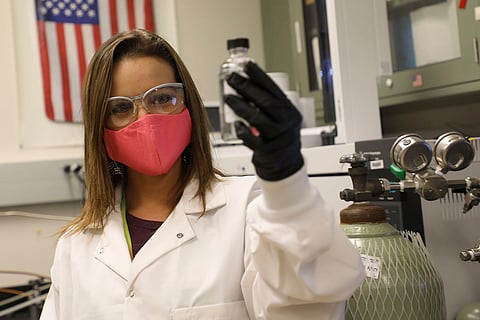Washington State Faces a Shortage of Latinx Doctors Unless Systemic Changes Are Made
by Sally James
Leo Morales, an M.D. and Ph.D., is concerned about the future. He worries about the doctors who will treat all of us in the coming years. And he's alarmed by how few of them are Latinx.
He sees a staggering disconnect. Latinx people are a growing percentage of the population of Washington State, but the human resource of doctors who share the community's cultures and languages has been declining as a percentage of the population. In a recent research report, Morales and colleagues from the University of Washington outlined this problem in detail.
Morales is the son of parents who immigrated from Bolivia, and he grew up in Oregon speaking Spanish at home. He is co-director of the Latino Center for Health at U.W. and an assistant dean of the School of Medicine.
Estimates are that Latinx people make up about 14% of the population of Washington, but within five years, this figure will grow to 17%. If any of these people want to see a doctor who speaks Spanish and possibly identifies as Latinx, they could have a long wait. These doctors currently make up only 3.4% of the doctors in the state.
"If I want to describe my symptoms, I can't do that well in English," one Latinx patient said in a video recorded for a U.W. symposium on the topic. Another patient in a similar video said he waited three months to see a doctor because he wanted health care in Spanish.
Delaying treatment can mean a patient's condition gets worse or even becomes dire and requires emergency care. A patient's hesitation describing symptoms in a second language could mean an English-speaking doctor gets the wrong impression or writes down the wrong symptom. Instructions about how to take care of oneself after therapy or treatment could be misunderstood, leading to complications.
Trust, which has a huge impact on how truthful and open patients are with doctors, can diminish if the patient does not imagine their doctor understands their life experience.
"Research shows that concordance between doctors and patients improves outcomes," Morales said in an interview with the Emerald. Concordance means a match between the life experience of two people.
For instance, physicians tell people how to change their lifestyles to avoid heart disease or how to try to quit smoking. They tell patients that their food choices may be causing Type 2 diabetes. And of course, lately they have been telling people to limit contact with other people and stay home from work if possible to avoid the virus that causes COVID-19. But what if patients can't stay home because they can't afford to? A physician needs to understand the day-to-day challenges in a patient's home community.
During this pandemic, the disconnect yawns wider. Morales pointed out that testing sites have been more available and widely used in the north end of Seattle, rather than South Seattle. There have been more sites — and a higher volume of tests — for people living in neighborhoods with higher economic status. But in Washington State, Latinx and Black people are dying of COVID-19 at disproportionately greater percentages than the overall population.
Where Morales sees hope and change is in ways to improve K-12 education for Latinx students. He believes it's crucial to make it easier for a greater variety of people — including nurses and foreign-educated physicians — to more quickly become fully licensed physicians.
"This is not a case of saying let's admit more Latinx people to medical school," he said. "It's a systemic problem, because we have unequal educational opportunities in society."
The report lists a set of recommendations to ease the shortage. Some of those recommendations are about creating a different ecosystem to get people into medical school who may be working as nurses or pharmacists or allied health professionals today. They may need a curriculum that helps them prepare to begin medical school — and that will take an investment, Morales said. Community colleges may be a key stepping stone. The Washington State legislature helped pay for this report.
"We want to promote the idea of an ecosystem that provides multiple pathways to the same outcome," he said.
Making loans easier to repay would also help Latinx students pay for medical school.
"It's going to take a while, but [changes] would put us on the right trajectory," he said. Without these changes, the gap will grow wider and thousands of Washington residents will be left without appropriate medical care.
Sally James is a Seattle-based science reporter.
The featured image is attributed to Sandia Labs under a Creative Commons 2.0 Non-Commercial/ No Derivs License.
Help keep BIPOC-led, community-powered journalism free — become a Rainmaker today.


